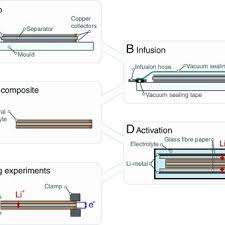
Breaking News
 Argentina Moves to Let Banks Offer Bitcoin and Crypto Services
Argentina Moves to Let Banks Offer Bitcoin and Crypto Services
 We're One Storm Away From Disaster
We're One Storm Away From Disaster
 Think a Dairy Cow Will Tie You Down? Here's the Truth.
Think a Dairy Cow Will Tie You Down? Here's the Truth.
 Students challenge auto industry with modular EV you can fix yourself
Students challenge auto industry with modular EV you can fix yourself
Top Tech News
 This tiny dev board is packed with features for ambitious makers
This tiny dev board is packed with features for ambitious makers
 Scientists Discover Gel to Regrow Tooth Enamel
Scientists Discover Gel to Regrow Tooth Enamel
 Vitamin C and Dandelion Root Killing Cancer Cells -- as Former CDC Director Calls for COVID-19...
Vitamin C and Dandelion Root Killing Cancer Cells -- as Former CDC Director Calls for COVID-19...
 Galactic Brain: US firm plans space-based data centers, power grid to challenge China
Galactic Brain: US firm plans space-based data centers, power grid to challenge China
 A microbial cleanup for glyphosate just earned a patent. Here's why that matters
A microbial cleanup for glyphosate just earned a patent. Here's why that matters
 Japan Breaks Internet Speed Record with 5 Million Times Faster Data Transfer
Japan Breaks Internet Speed Record with 5 Million Times Faster Data Transfer
 Advanced Propulsion Resources Part 1 of 2
Advanced Propulsion Resources Part 1 of 2
 PulsarFusion a forward-thinking UK aerospace company, is pushing the boundaries of space travel...
PulsarFusion a forward-thinking UK aerospace company, is pushing the boundaries of space travel...
 Dinky little laser box throws big-screen entertainment from inches away
Dinky little laser box throws big-screen entertainment from inches away
 'World's first' sodium-ion flashlight shines bright even at -40 ºF
'World's first' sodium-ion flashlight shines bright even at -40 ºF
Morphing carbon fiber composite changes shape on demand

Created by a team at Sweden's KTH Royal Institute of Technology, the three-layer solid-state material consists of two sheets of lithium ion-doped carbon fiber, between which is sandwiched a sheet of a solid electrolyte.
The latter is more specifically known as a "structural battery electrolyte," and when a low-voltage DC current is run through it, ions migrate from one sheet of carbon fiber to the other (passing through the electrolyte). This causes the discharging layer of carbon to contract, while simultaneously causing the charging layer to expand. As a result, the entire piece of material bends to one side.
Even once the current is removed, the composite remains in this shape. If the current is reversed in a subsequent electrical charge, though, the lithium ions migrate in the opposite direction.



